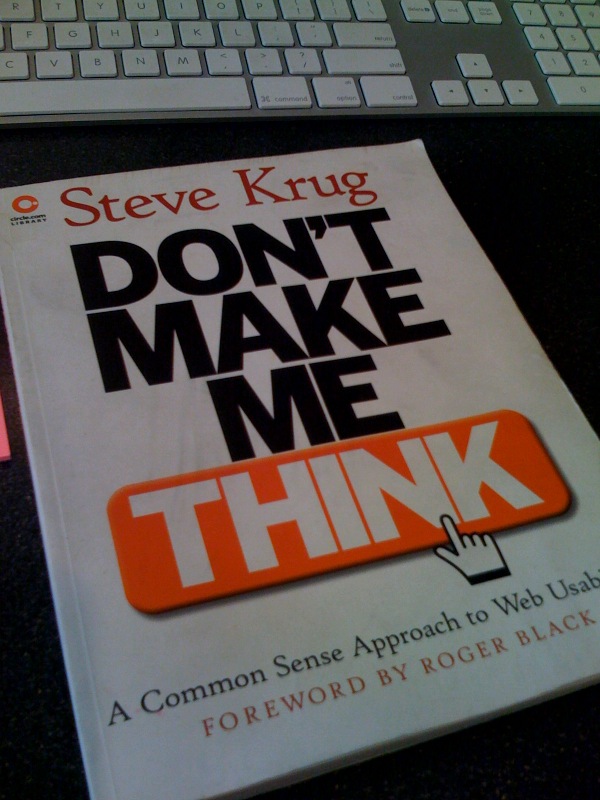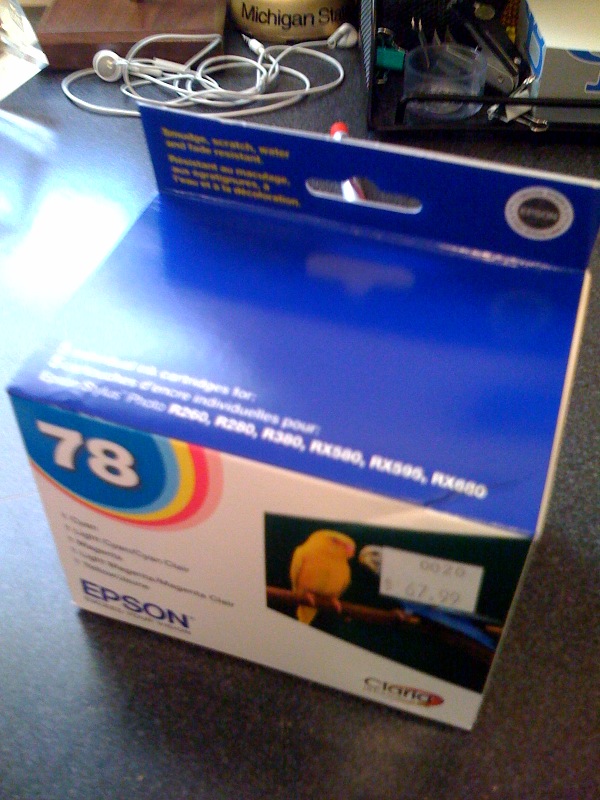 I was digging through a pile of old stuff with a friend throwing away things which were no longer needed and came across the usability book Don’t Make Me Think written by Steve Krug in 2000. It was pretty thin and I had to wait for an oil change and some tires being installed so I started reading it.
I was digging through a pile of old stuff with a friend throwing away things which were no longer needed and came across the usability book Don’t Make Me Think written by Steve Krug in 2000. It was pretty thin and I had to wait for an oil change and some tires being installed so I started reading it.
I really like the book – it speaks to me and explains usability issues in a ways that make sense to me. Perhaps the reason I like it is that it was written in 2000 and my understanding of web technology is somewhere back in 1997-1998 so this is something I am capable of learning :)
Steve keeps it simple and gives some basic mantras that I find pretty easy to apply now when I am designing something. I particularly like that he does not try to make Usability something mysterious and complex and only best done by experts.
I now walk around and apply his “Don’t Make Me Think!” mantra all the time. Yesterday I was at Office Max buying some ink-jet refills. I knew my printer model and even knew the in “family” called “Epson Claria” – but when I got there, there seemed to be two cartridge series that were for my printer – so I wanted to verify which printer the cartridges were for.
 Without thinking I picked up a box and looked at the back and sides of the box – looking for some fine print (black on white background) telling me which printers the cartridges applied. As Steve would say, we parse new situations using the rules we have learned form the old situations – when things “fit the mold” folks can use the new design *without thinking*.
Without thinking I picked up a box and looked at the back and sides of the box – looking for some fine print (black on white background) telling me which printers the cartridges applied. As Steve would say, we parse new situations using the rules we have learned form the old situations – when things “fit the mold” folks can use the new design *without thinking*.
When I did not find what I was looking for I was forced to think – yikes. Now I was in trouble. SO next I looked for a book of specifications – the other vendors had a book hanging at a particular location on the shelves – but for the Epson shelves – no book! Aargh – more thinking.
So next I saw the helpful sales person – she came over and I had to admit that I (A computer science PhD) could not figure out how to pick ink for an RX580! She took the box from my trembling hand and pointed out that the ink I was indeed suitable for the RX580.
The fine print was on the *top* of the box – it was small print – it was white on a blue background – and it violated the Steve Krug Home page rule – it was buried under two lines of “Happy Talk” (one of Steve’s rules is “Happy Talk must die”). It told me in English and French that there were five cartridges in the box – AAARGH – the box was 3.5 inches deep – OF COURSE it had five cartridges. I made a special trip to this store intending to buy five ink cartridges! AARGH. Another Steve rule is not to waste space repeating what the user already knows.
And it violated another Steve rule making the important data the largest font. The “how many cartridges” lines were larger font than the printer line. The printer list was in bold so they did get one thing right. The number 5 was very large and also in bold and it was the first thing you see when you look at the box top.
Of course my mind runs to the design meeting where they decided that putting the stuff on the top of the box was the best approach:
– It means folks can figure out which printers a box of ink applied to without touching the box
– And with the above improvement – we no longer need a box of ink cartridge applications – saving the company far more than the designer’s consulting fee
But – by making several simple mistakes, the decision made me think. Luckily I am capable of thinking and did successfully get my ink cartridges.
The right way to do it would be to put the cartridge applications both on the top and on the back in black-on-white print. Then I might have learned the new way – but also if I did it the old way – it would have worked. Another alternative would be to make the top of the box white and only put the printer list and none of the happy talk.
Now my mind is racing on the redesign of www.dr-chuck.com…
But the real upshot is that now I think of myself as a qualified UI expert because I read a book written in 2000 while getting my oil changed and tires changed.
Or at least I know enough to be dangerous to myself. I am looking forward to reading the whole book sometime. A transmission service should do the trick.